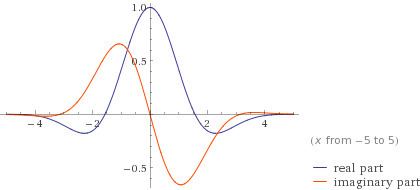 | ||
Gabor wavelets are wavelets invented by Dennis Gabor using complex functions constructed to serve as a basis for Fourier transforms in information theory applications. They are very similar to Morlet wavelets. They are also closely related to Gabor filters (see Gabor filter#Wavelet space). The important property of the wavelet is that it minimizes the product of its standard deviations in the time and frequency domain. Put another way, the uncertainty in information carried by this wavelet is minimized. However they have the downside of being non-orthogonal, so efficient decomposition into the basis is difficult. Since their inception, various applications have appeared, from image processing to analyzing neurons in the human visual system.
Contents
Minimal uncertainty property
The motivation for Gabor wavelets comes from finding some function
where
The variance in the wave number domain is:
Where
With these defined, the uncertainty is written as:
This quantity has been shown to have a lower bound of
Equation
The equation of a 1-D Gabor wavelet is a Gaussian modulated by a complex exponential, described as follows:
As opposed to other functions commonly used as bases in Fourier Transforms such as
It is also worth noting the Fourier transform of a Gabor wavelet, which is also a Gabor wavelet:
An example wavelet is given here:
